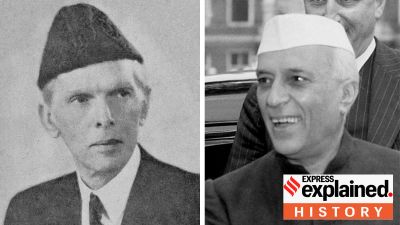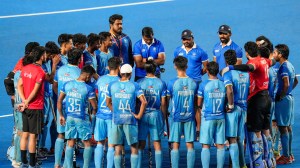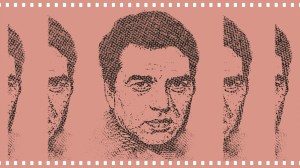Why Yashasvi Jaiswal’s dismissal has reignited questions about DRS in cricket
Technology has reduced errors in decision-making but it is not failsafe yet. How do Snicko, Hot Spot, and HawkEye work, and why are there repeated controversies around their use?
 Yashasvi Jaiswal's innings with 200 left of the target, and 27 overs to survive, ended controversially when he went for a doomed pull, and gloved it to Alex Carey off Pat Cummins. (Photo: AP)
Yashasvi Jaiswal's innings with 200 left of the target, and 27 overs to survive, ended controversially when he went for a doomed pull, and gloved it to Alex Carey off Pat Cummins. (Photo: AP)Fifteen years into the Umpires Decision Review System (DRS) era in Test matches, technology has considerably reduced bad decisions in the game. But intermittently, a storm brews, perhaps only as a reminder that even scientific evidence is subject to human interpretation, and that machines can be fallible, too.
The episode involving opener Yashasvi Jaiswal in the second innings at the MCG — where science faltered, but human judgment prevailed — is evidence that technology in the game is still not foolproof, and illustrates why a section of the cricket fraternity continues to be suspicious of DRS and the accuracy of the tools than make it.
What happened at the MCG?
Jaiswal tickled (or gloved, or both) a short ball from Pat Cummins to wicket keeper Alex Carey. The on-field umpire judged it not out. Cummins sought a review, and the Snicko detected no nick.
Still, the third umpire overturned the decision – because to his eyes, it seemed there was a clear and obvious deflection (which is clinching evidence), from the sticker just below the handle of the bat, and a ricochet from the glove. The ball perceptibly changed direction, and the television umpire went with the proof his eyes provided.
Later, India captain Rohit Sharma said Jaiswal himself felt he had edged it, thus nipping a potential scandal in the bud.
So why is there a problem still?
In the end, while the right decision was made, a flaw was exposed with the Snicko — that it does not register a spike when there is a glanced shot, that is, when the ball glides off the bat, rather than from the edges.
“On those glance-type shots, there is rarely any noise. It shows only ambient noise,” Warren Brennan, whose company BBG Sports operates Snicko, told the Sydney Morning Herald.
“Glance shots are not Snicko’s strength, whereas it is for Hot Spot,” Brennan said, referring to a technology that uses infrared imaging to detect contact between the ball and bat or pad.
So if Snicko doesn’t detect every edge, and is hence not 100% accurate, why is it used? A couple of other incidents, too demonstrate Snicko’s unreliability.
In the second innings in the Perth Test in November, K L Rahul was convinced he had not edged to the keeper, and the on-field umpire agreed. But upon DRS, the decision was changed as the Snicko showed a spike.
Earlier that month, in the Mumbai Test against South Africa, there was an issue with Rishabh Pant’s bat-pad dismissal during India’s unsuccessful fourth-innings chase. There was doubt whether the bat had hit the pad or grazed the edge, and the third umpire changed the on-field umpire’s not-out call.
The other question: If Hot Spot indeed registers such edges, why is it not employed as part of DRS?
How do Snicko and Hot Spot work and differ?
Snickometer, invented by the English computer scientist Alan Paskett, works on the principle of audio waveform pattern. It filters the ambient noise and amplifies the relevant signal – that is, the sound generated when the bat hits the ball, which has a particular frequency – with the help of a resonance filter and Oscilloscope, which record and filter the sound waves.
Hot Spot uses technology that was originally devised by French scientist Nicholas Bion for use by the military. It relies on infrared thermal imaging of the spot the ball has grazed the bat – thermal imaging cameras placed at both ends behind the bowler, capture heat signatures created when the ball touches the bat (or pad or body).
Why then is Hot Spot not used widely?
For starters, it is much more expensive than Snicko, and can cost up to $10,000 a day. Also, the technology is still used in certain countries for military purposes, and its use in cricket is therefore restricted.
But apart from everything else, the tech is not totally failsafe. In its incipient days, batsmen, most famously the great VVS Laxman, foiled it by applying vaseline on the outside edge of the bat. But he allegedly did not put vaseline on the inside edge, lest an inside edge on to the pad went undetected, and he was given out even if he had nicked the ball.
Brennan, who adapted Hot Spot technology for cricket, claimed that batsmen used silicone tape to prevent edges being registered. “The majority of bats had some form of protective coating. Strangely enough, this protective coating would cover only half the edge of the bat,” he said in 2013, and urged the ICC to ban all such coatings.
The accusations escalated during that year’s Ashes series. The issues of accuracy and cost nudged several broadcasters including Sky and SuperSports to shun Hot Spot.
Is the other tool, HawkEye, more precise?
It is the most important technology in the DRS set-up. The ball-tracking method, a brainchild of British mathematician, AI scientist, and cricket fan Paul Hawkins, has been largely error-free. But even then, HawkEye has not been error- or controversy-proof.
Many cricketers, most notably Virat Kohli and England captain Ben Stokes, want the umpire’s call removed. Stokes was left fuming after a raft of lbw decisions went against his side on the umpire’s call during England’s tour of India last year.
Stokes mentioned the lbw dismissal of Joe Root in England’s second innings in the fourth Test in Ranchi in February 2024. To the naked eye, Ravichandran’s Ashwin ball landed outside the leg stump — the umpire too, thought the same — but upon review, the footage showed the ball landing in line with the leg stick and hitting the stumps.
Earlier, in the third Test at Rajkot, Zak Crawley was given out by umpire Kumar Dharmasena, and the review upheld the decision. The footage on TV, however, showed the ball missing the stumps. Match referee Jeff Crowe later admitted a glitch in the system, which angered a section of English pundits, who suspected a manipulation of visuals.
Could the visuals have been manipulated?
It’s highly unlikely. The technology company was not from the same country as the host broadcaster. HawkEye, which the England cricketers criticised, is from the UK.
To eliminate such doubts, the former England captain Michael Vaughan came up with a suggestion: “Stick a camera and microphone in the truck so as a decision is being made, we all know exactly what is going on, and how much humans are involved. And if you stick an ICC official in there as well we would know that the integrity – something we talk so much about in the game – is intact,” he said.
- 01
- 02
- 03
- 04
- 05






































